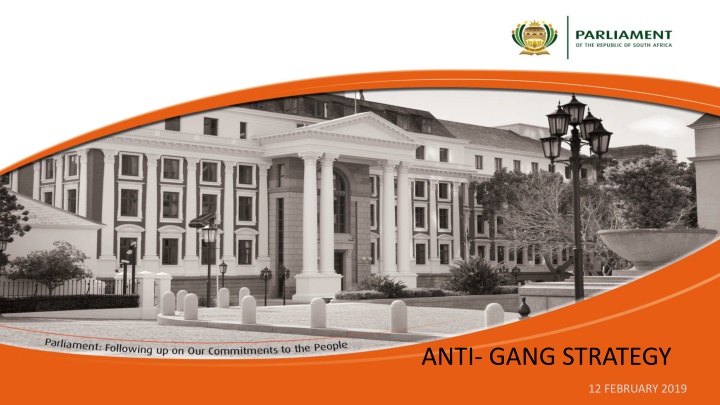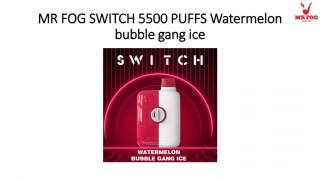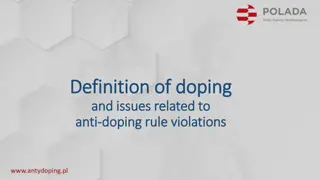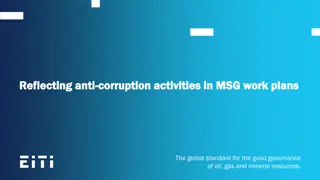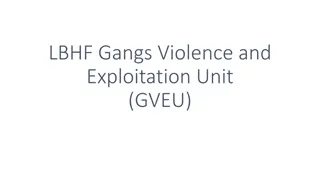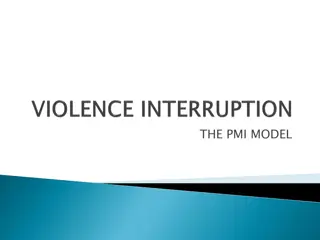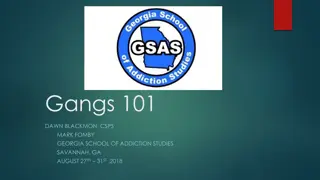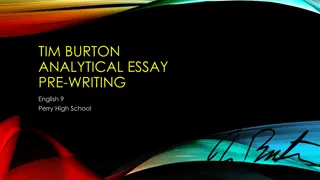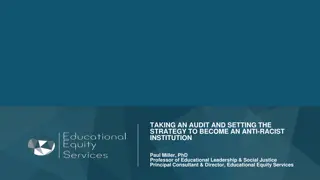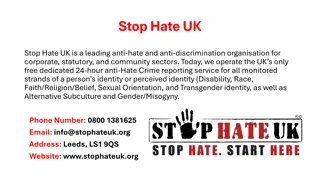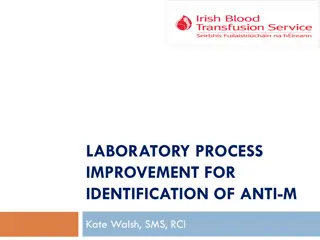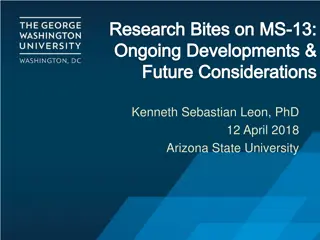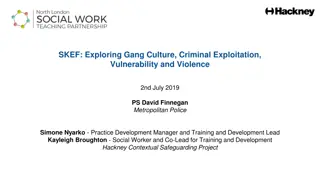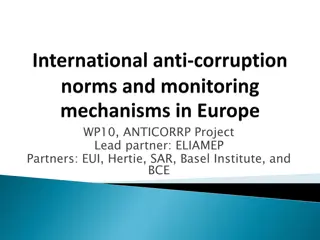National Anti-Gang Strategy Overview
Gang violence continues to be a significant issue in South Africa, with various provinces heavily impacted. Measures such as the Anti-Gang Unit and the National Anti-Gang Strategy have been implemented to combat this problem. Legislative and policy imperatives underline the need for a multi-agency and community-centered approach to address gang-related activities effectively.
Uploaded on Aug 15, 2024 | 0 Views
Download Presentation

Please find below an Image/Link to download the presentation.
The content on the website is provided AS IS for your information and personal use only. It may not be sold, licensed, or shared on other websites without obtaining consent from the author.If you encounter any issues during the download, it is possible that the publisher has removed the file from their server.
You are allowed to download the files provided on this website for personal or commercial use, subject to the condition that they are used lawfully. All files are the property of their respective owners.
The content on the website is provided AS IS for your information and personal use only. It may not be sold, licensed, or shared on other websites without obtaining consent from the author.
E N D
Presentation Transcript
ANTI- GANG STRATEGY 12 FEBRUARY 2019
Introduction Gang violence is a very old problem Some provinces very badly affected by gang violence SAPS reported in its 2017/18 stats that up to 18% of all murders are gang-related WC,EC, Gauteng and KZN are badly affected by gang violence Led to Shutdown Movement protests in Cape Town, Westbury, Bloemfontein, and Durban Communities are up in arms about gang violence Gangs have become more brazen and have launched attacks on communities, children and women and even the police 2
LEGISLATIVE & POLICY IMPERATIVES Section 12(1)(c) of the Bill of Rights in the Constitution (1996) provides for citizens to be free from all forms of violence from either public or private sources The Prevention of Organised Crime Act (POCA)(Act 121 of 1998) makes belonging to, and association with a gang in the commission of a crime, illegal Civilian Secretariat for Police assessment of gang strategies in 2014 finds that a multi-agency approach is necessary to fight gangs. It also recommended that communities have to be at the center of planning and the implementation of local anti-gang strategies. 3
POLICY IMPERATIVES National Anti-Gang Strategy was developed in 2016 (NICOC) Two year extensive consultation process, builds on 2008 WC Transformation and Gang Prevention Strategy The strategic objectives of the National Anti-Gang Strategy are: Adopting an effective coordinated and inter-departmental approach Promoting a community-centered approach to combating gangsterism Establishing partnerships between Government, the private sector, civil society and communities Mitigating the risks posed by gang-related activities through the implementation of prevention, containment, management and mitigation mechanisms 4
ANTI-GANG STRATEGY Strategy premised on four pillars: Human Development; Social Partnerships; Spatial Design and The Criminal Justice Process.
ANTI-GANG UNIT The President and the Minister of Police responded to the demands from communities by launching the Anti-Gang Unit on 2 November 2018 in Hanover Park. Operational mandate of the AGU: Investigate all gangs, including prison gangs, which fits the definition of a criminal enterprise, as defined by the POCA; Investigate gang-related violence, perpetrated by the defined gangs; Investigate all gang-related activities which comprises/forms the criminal enterprise of the gangs, with the focus on dismantling the economic profits generated by the defined gangs; The functions should be divided in two sections, for investigating non- prison gangs and prison gangs, separately, as the investigation methodology differs within the two environments
CONCERNS There are reports that in the Western Cape there have been tensions with the implementation process Reports surfaced that the Deputy Provincial Commissioner for Visible Policing has started his own unit called the Major Offences Response Team (MORT) unit The SAPS must explain to the Committee why, when the President established the AGU, attempts are made within the Western Cape to undermine the effectiveness of the unit. The SAPS must state what training the AGU has received 7
CONCLUSION The Committee must make sure that the President s launch of the Anti-Gang Unit is not undermined The in-fighting of senior officers threatens service delivery to residents affected by gang violence The Committee should make sure that the communities receive policing services from the AGU in all gang hotspots The Committee should ask for the Minister to resolve the conflicts amongst the senior SAPS managers. 8
